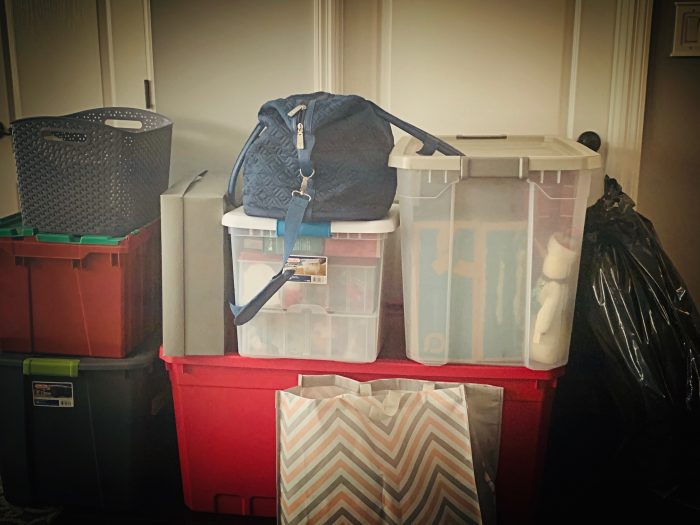It was about a year ago when my husband mentioned that I might enjoy the Marie Kondo series on Netflix.
He was right! I have always had an instinct toward organizing—thanks to lessons from my grandmother, who had her pantry full of perfectly lined up glass jars—and I was already incorporating the habit of year-round “spring cleanings.”
It was validating to see that I already practiced many of Marie Kondo’s strategies, such as how she folds clothes, uses bins, and how she encourages speaking to one’s home.
But, let’s face it, as a couple in our mid-30s, we had collected our share of junk.
When we first moved in together, we had double or quadruple of every kitchen item. As a college English teacher and a writer, I came with a massive book collection, journals, tons of papers, and crafting supplies, not to mention a ton of clothes and shoes that are stereotypical of many women. I had bins mentally marked “future projects” that never came to fruition.
My husband had old computers and game systems, his Coca Cola collection, miscellaneous items from middle school, boxes of old paperwork, and old clothes. And we both inherited many items from family members. For the most part, he just hated the act of purging. He wanted no part of going through the boxes and having to make a decision about eliminating or organizing any of it. It is certainly easier to leave it in the attic untouched.
The truth is that it is daunting to face all our collections.
In today’s culture, our objects are part of us. For me, my collections were symbolic of when I was more innocently hopeful and determined to create and become something. Facing these collections meant facing the fact that time has passed, people are gone, dreams have or have not been lived. Objects represent our foundation, identity, and growth in a tangible way. It is a deeply emotional journey to reminisce and let go.
But, despite our seemingly endless boxes of collected junk, I noticed that my husband and I were always diligent about keeping our kitchen counters, living room, and bathrooms as clean and clutter-free as possible. This told me that we really desired a different relationship with our belongings and our space.
Together, we tossed out bags of paperwork and donated any usable household items that were not of current use or joy for us. I wish we could have made a lot of money reselling everything, but we didn’t. We don’t have the time, nor do we live in an area where yard sales are common. And ultimately, I never want useful items to go to waste. Therefore, similar to Marie Kondo’s method, with each piece I donated, I wished it well in a new home with someone who needed it more than we did. This idea that someone else could benefit gave me immense joy and ease with letting go.
Yet, I was surprised that I felt deeply angry at times. I wasn’t mad that I had to get rid of my items; I was mad at my younger self for creating this problem in the first place. I was mad that I didn’t make wiser decisions, that I clung to objects, and most of all, that I wasted so much money. With everything I tossed, there was an inner voice yelling at my 20-something-year-old self to save rather than spend. I lamented that I spent my time nervously shopping instead of reading or writing a poem. I had to find a way to turn the feeling of regret into the determination I need to change and live better now.
In many ways, following the Marie Kondo method has helped me become more mindful. I collect less and release items more readily. I do not attach sentiment to every new or old object. I make fewer purchases under the “what if I need this in the future” guise. My instinct now is to say, “we don’t need it.”
I still have my moments of emotional shopping. But those moments, once commonplace, are far and few between. My mentality has shifted. Perhaps, most significantly, the way my husband and I feel around clutter has changed the most. While my shopping and collecting habits used to be a catalyst for my anxiety, now the abundance of unnecessary items genuinely elicits uneasiness and frustration in us.
I end this by saying I am no expert. I have not purged every item down to bare shelves. I hardly live a minimalistic life, and my actively used office desk at home is still hard to find under all the office paraphernalia. I realize that it will take some time to undo a 15-year-old bad habit.
But I am on a mission to reach Marie Kondo’s “choose joy” lifestyle that I want for our life.












Read 5 comments and reply